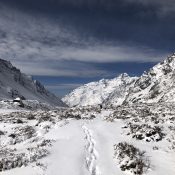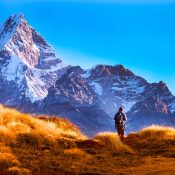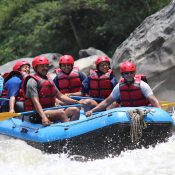Guide to Jungle Safaris in Nepal: Rules and Tips for a Safe Travel

Guide to Jungle Safaris in Nepal: Rules and Tips for a Safe Travel
Planning a jungle safari in Nepal’s wild region? Chitwan National Park and Bardiya National Park are top picks for spotting Bengal tigers, one-horned rhinos, elephants, and tons of birds. Other spots like Koshi Tappu Wildlife Reserve bring unique wetland adventures. These UNESCO-recognized parks focus heavily on conservation, so following their rules keeps your trip safe and ethical. Here’s a friendly guide to the key rules and tips for navigating these jungles, based on Nepal’s Department of National Parks and Wildlife Conservation (DNPWC) guidelines. Always book with licensed operators since going solo isn’t allowed.
Essential Rules and Tips for Jungle Safaris in Nepal
Entry Permits
You’ll need a permit for any park activity, available at entrance gates or DNPWC counters (like in Kathmandu or Sauraha for Chitwan). Permits are per person per day and only valid for that day. For Chitwan, grab them at Sauraha or Kasara gates. Bardiya permits are at Thakurdwara. Koshi Tappu permits come from the Dharan office, and Shuklaphanta’s are at Mahendranagar.
Rules for All Parks
The DNPWC sets strict rules to protect wildlife and keep you safe. Here’s what you need to know:
- Always go with a licensed guide. For Chitwan jungle walks, groups under 10 need two guides.
- Stick to marked paths. Wandering off can disturb animals or put you in danger.
- Don’t feed or touch wildlife. Keep 50 meters away from tigers or rhinos and 20 meters from birds or deer. No flash photography.
- Take all your trash out. Plastic bags can get you fined.
- No fires, smoking, or loud music to avoid disturbing the ecosystem.
- Jeep safaris hold up to 6 people, elephant rides up to 4. Jeeps are a more ethical choice.
- No alcohol or weapons are allowed inside park boundaries.
- Core zones close at dusk, around 5 PM. Overnight stays are only allowed in approved lodges.
Breaking these rules can lead to permit cancellation, fines, or getting kicked out.
Park-Specific Tips
Chitwan National Park
This UNESCO World Heritage Site is packed with rhinos and tigers.
- Rules: Canoe trips on the Rapti River are limited to 1-hour slots. Elephant bathing requires a trainer’s supervision. Drones need DNPWC approval.
- Tips: Stay alert on jeep safaris, especially at dawn or dusk when animals are active. Monsoon season (July to September) brings floods and leeches, so plan around it. February’s grass burns make rhinos easier to spot.
- Navigation: Use offline map apps like Gaia GPS for buffer zone trails, but rely on your guide in core areas.
Bardiya National Park
Nepal’s largest Terai park, known for epic tiger sightings.
- Rules: Elephant safaris are capped at 2 hours. Karnali River rafting requires life jackets, which are provided. Fishing needs a separate permit.
- Tips: This park’s remote, so expect more wildlife. Wear neutral colors and bring insect repellent. October to February is cooler and great for spotting Gangetic dolphins with binoculars.
- Navigation: The park’s massive (968 sq km), so jeeps are the way to go. Learn to spot animal tracks like pugmarks with your guide for better sightings.
Other Great Spots
- Koshi Tappu Wildlife Reserve: Perfect for birdwatching with over 500 species. Only boat safaris are allowed, no walking in wetlands. Visit November to March for migratory birds and use a compass for river navigation.
- Shuklaphanta National Park: A haven for swamp deer. Vehicles aren’t allowed after 4 PM. April to May is dry and boosts animal sightings. Pack light for humid trails.
Safety and Packing Tips
- Health: Get hepatitis and typhoid shots before you go. Malaria risk is low, but pack DEET repellent. Bring a water purifier and a first-aid kit for bites or stings.
- Gear: Wear long-sleeve cotton clothes, sturdy boots, a hat, and sunscreen. Pack binoculars and a power bank. For navigation, a waterproof compass or GPS watch is key since jungle signals can be spotty.
- Timing: October to March is dry and ideal for spotting animals. Avoid the monsoon season.
- Eco Choices: Stay at eco-lodges like Barahi Jungle Lodge in Chitwan. Book cultural tours with Tharu communities and consider carbon-offset flights for a sustainable trip.
All Categories
Quick booking process
+977-9803633878




